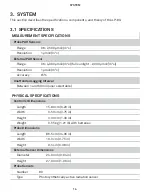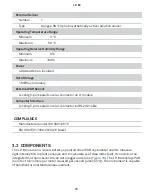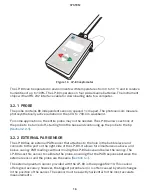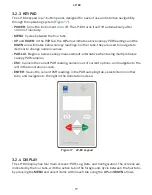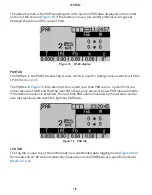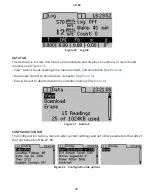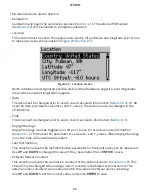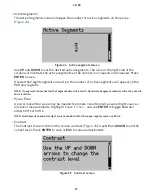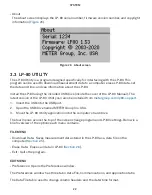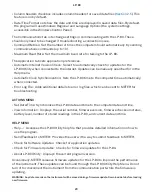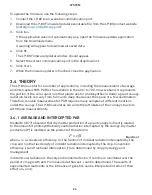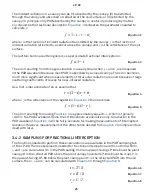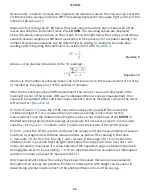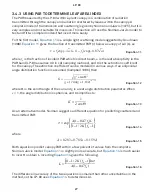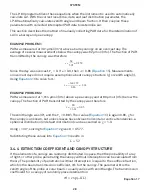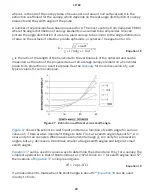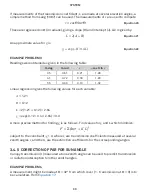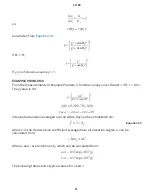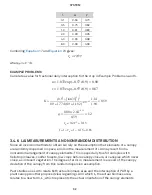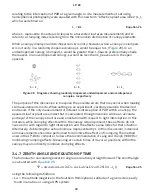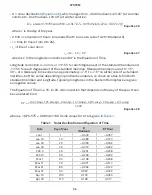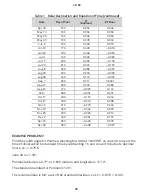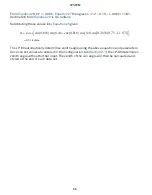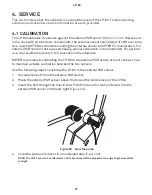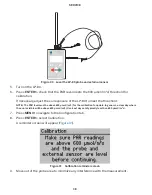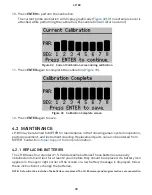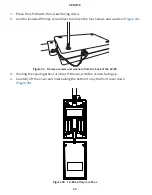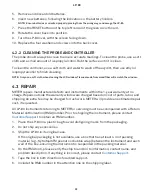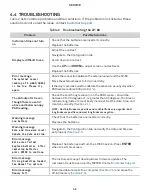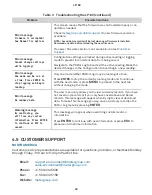
28
SYSTEM
The LP-80 program utilizes these equations when the instrument is used to automatically
calculate LAI. With the correct local time, date, and leaf distribution parameter, the
LP-80 automatically calculates zenith angle and beam fraction. It then couples these
parameters with collected intercepted PAR data to determine LAI.
This section describes the method of manually collecting PAR data for the determination of
LAI in a barley and pea canopy.
EXAMPLE PROBLEM 1
PAR was measured at 391 μmol/(m
2
s) above a barley canopy on an overcast day. The
average of several measurements below the canopy was 62 μmol/(m
2
s). The fraction of PAR
transmitted by the canopy was therefore
=
τ =
62
391
0.159
Since the day was overcast,
F
b
= 0. If
a
= 0.9, then
A
). Measurements
on overcast days do not require assumptions about canopy structure (
χ
) or zenith angle (
z
).
to solve for
L
:
−
=
=
ln0.159
0.86
2.14
L
EXAMPLE PROBLEM 2
PAR was measured at 1,614 μmol/(m
2
s) above a pea canopy and at 80 μmol/(m
2
s) below the
canopy. The fraction of PAR transmitted by the canopy was therefore
τ =
=
80
1,614
0.05
The zenith angle was 30°, and the
F
b
= 0.881. The
A
χ
for
the canopy is unknown, but unless leaves have obvious horizontal or vertical tendencies, a
spherical distribution (or default distribution) can be assumed so
χ
= 1.0.
Using
z
= 30°, solving for
gives
K
= 0.577.
Substituting these values into
results in
=
L
5.2
3.4.4 EXTINCTION COEFFICIENT AND CANOPY STRUCTURE
If the elements of a canopy are randomly distributed in space, then the probability of a ray
of light, or other probe, penetrating the canopy without interception can be calculated from
theory. The probability of penetration without interception is equal to the sunfleck fraction,
which is the beam transmission coefficient,
τΘ
, for the canopy. The parameter
Θ
is the
zenith angle of the probe or solar beam.
τ
usually varies with zenith angle. The transmission
coefficient for a canopy of randomly placed elements is:
Equation 17
τθ =
−
KL
exp(
)

